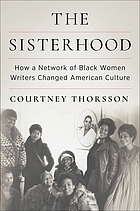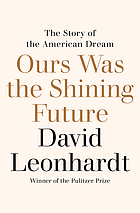We’re back from the holiday break to resume The Friday List! Every week, new books are arriving at RLB Library and to keep you up-to-date on what has come in, we’ll be posting the most recent 30 days of arrivals every Friday. The link below will take you to a catalog listing so that you can explore and find titles that interest you. Be sure to check back regularly to see what else has arrived!
THE FRIDAY LIST
If you want some ideas on what to read, here are some highlights:

Our hidden conversations : what Americans really think about race and identity, Michele Norris, 2024
Our Hidden Conversations is a unique compilation of stories, richly reported essays, and photographs providing a window into America during a tumultuous era. This powerful book offers an honest, if sometimes uncomfortable, conversation about race and identity, permitting us to eavesdrop on deep-seated thoughts, private discussions, and long submerged memories.

The sisterhood : how a network of Black women writers changed American culture, Courtney Thorsson, 2023
On February 6, 1977, Toni Morrison, Alice Walker, Ntozake Shange, and several other Black women writers met at June Jordan’s Brooklyn apartment. Naming itself “The Sisterhood,” the group would meet over the next two years to discuss the future of Black literary feminism, how to promote and publicize their work, and the everyday pressures and challenges of being a Black woman writer. This network of individuals, which would also come to include Audre Lorde, Paule Marshall, Toni Cade Bambara and Margo Jefferson, as well as other Black women, shaped the direction of Black women’s writing and Black literary culture in the post-Civil Rights and post-Black Arts Movement era and its reception in popular culture, the literary marketplace, and the academy. Drawing on meeting notes, interviews with participants, their writings, and correspondence, Courtney Thorsson’s history of “The Sisterhood” recounts the personal, political, and professional bonds and motivations that shaped the group’s history and its dissolution. Turning to the group’s legacy, she considers the critical and popular success of Alice Walker and Toni Morrison in the 1980s, the uneasy absorption of Black feminism into the academy, and the racist and misogynistic backlash these writers faced and the limits of mainstream success. Though “The Sisterhood” only formally existed for two years, its impact on American literature and culture, as Thorsson demonstrates, has been profound even as it reveals the limitations of its success.

The supermajority : how the Supreme Court divided America, Michael Waldman, 2023
An analysis of how the Supreme Court’s new conservative supermajority is overturning decades of law and leading the country in a dangerous political direction. Michael Waldman explores the tumultuous 2021-2022 Supreme Court term. He draws deeply on history to examine other times the Court veered from the popular will, provoking controversy and backlash. He analyzes the most important new rulings and their implications for the law and for American society. Waldman asks: What can we do when the Supreme Court challenges the country? It was the most turbulent term in memory with the leak of the opinion overturning Roe v. Wade, the first Black woman justice sworn in, and the justices turning on each other in public.
 Ours was the shining future : the story of the American dream, David Leonhardt, 2022
Ours was the shining future : the story of the American dream, David Leonhardt, 2022
Two decades into the twenty-first century, the stagnation of living standards has become the defining trend of American life. Life expectancy has declined, economic inequality has soared, and, after some progress, the Black-white wage gap is once again as large as it was in the 1950s. How did this happen in the world’s most powerful country? And what happened to the “American dream”–the promise of a happier, healthier, more prosperous future–which was once such an inextricable part of our national identity? Drawing on decades of writing about the economy for The New York Times, Pulitzer Prize-winning writer David Leonhardt examines the past century of American history, from the Great Depression to today’s Great Stagnation, in search of an answer. To make sense of the rise and subsequent fall of the American dream, Leonhardt tells the story of the modern American economy as an ongoing battle between two competing forms of capitalism: one that envisions prosperity for most, and one that serves the individual and favors the wealthy. In vivid prose, Ours Was the Shining Future traces how democratic capitalism flourished to make the American dream possible, until the latter decades of the twentieth century when, bit by bit, the dream was corrupted to serve only the privileged few.